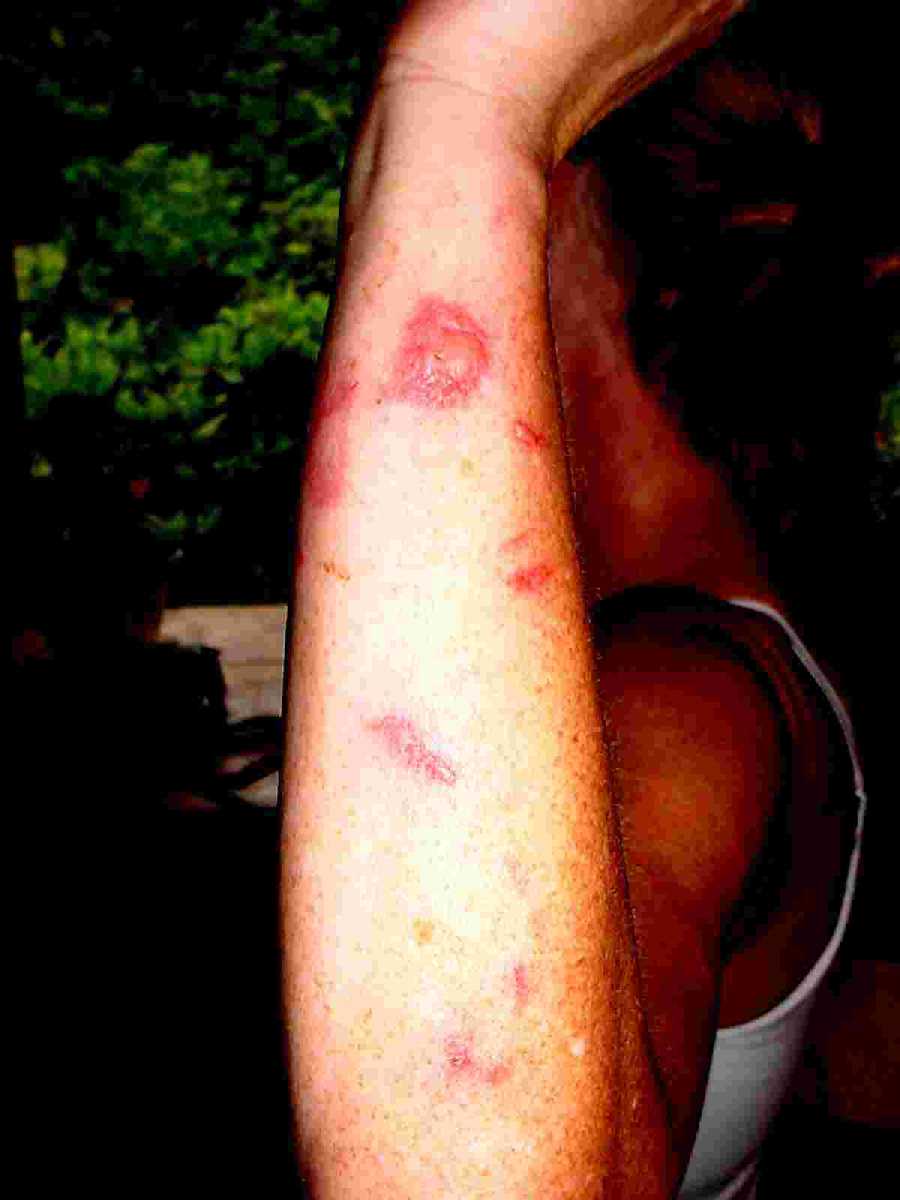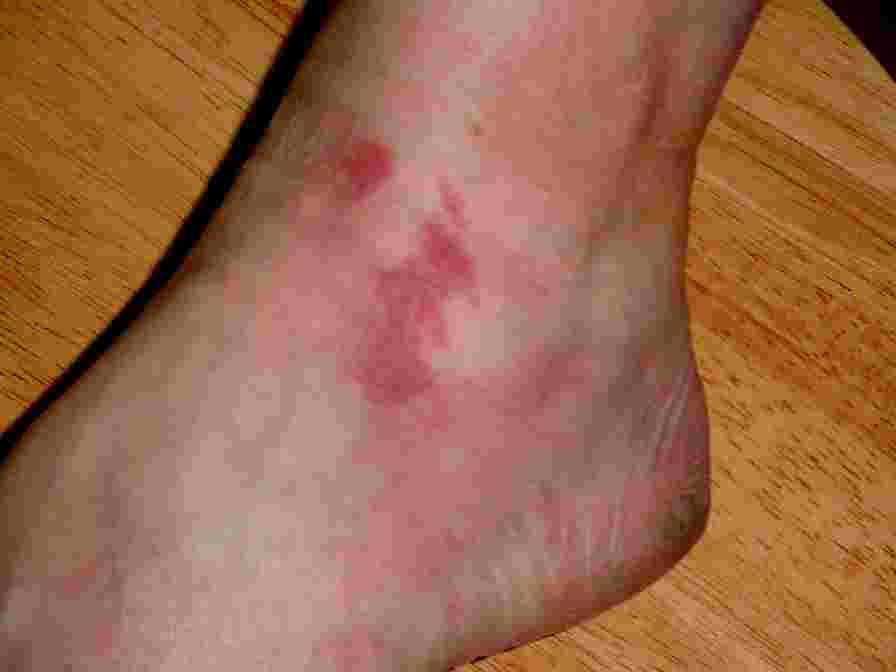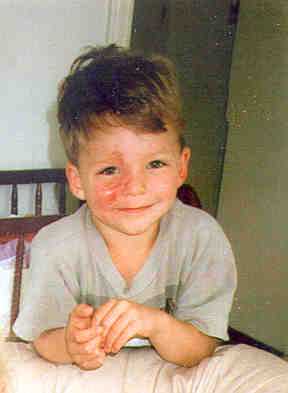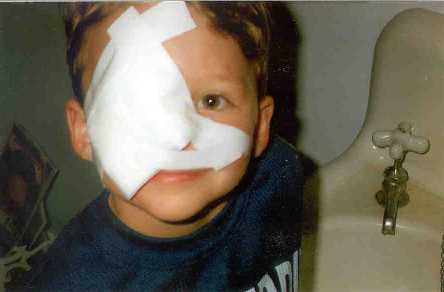Giant hogweed burns
Heracleum mantegazzianum
Coming into contact with the sap of giant hogweed, followed by exposure to sunlight, can produce painful, burning blisters, also known as photo-dermatitis. Hogweed stems contain a large amount of juice that squirts out when stems are broken or cut. Contact with the toxic sap usually happens when people cut down hogweed plants without taking precautions.



Children are attracted to the large, hollow stems for pretend swords or telescopes. Also, children may run through hogweed patches and brush up against broken stems. Both activities can cause children to be burned by hogweed sap.
When removing hogweed or working near it, wear protective clothing, such as gloves, long sleeves, pants, hats and protective eyewear to prevent skin contact with the sap. If skin comes into contact with sap, wash immediately with soap and water. Burned skin is very sensitive to sunlight, so keep any exposed areas covered when outside.
Contact your healthcare provider as soon as possible after exposure and tell him or her you suspect you have touched giant hogweed. If they are unfamiliar with the plant, have them contact the county or state noxious weed program for more information.
After the burns subside, darkened areas or scars can persist for several years. The affected areas remain sensitive to sunlight so it is important to keep the burned areas away from direct sunlight as much as possible.

Sadly, children are the most likely to get hurt by hogweed because they don't know they should avoid it. It is very important to check parks and greenspace areas where children are playing to make sure there is no hogweed in the area. For information on controlling giant hogweed in King County, please read the giant hogweed best management practices (142 KB Acrobat file) or visit our giant hogweed page.
Related information
- Giant hogweed identification
- Agriculture in King County, Washington
- Northwest yard and garden
- Animals, plants and habitat
Related agencies
- Dept. of Natural Resources and Parks
- Public Health, Seattle and King County
- Water and Land Resources Division
Program offices are located at 201 S. Jackson St., Suite 600, Seattle, WA 98104. To contact staff, see the Noxious Weed Control Program Directory, send an email, or call 206-477-WEED (206-477-9333).

 Translate
Translate